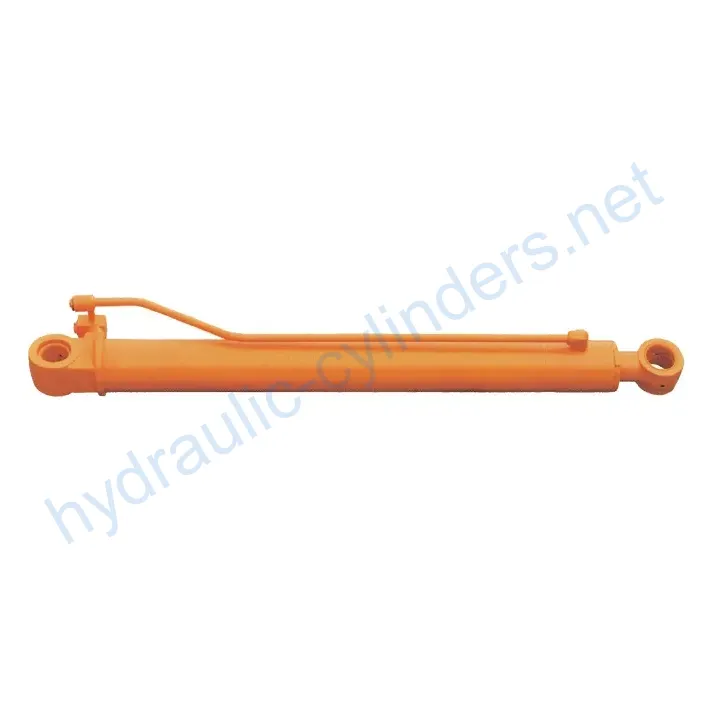Arm CylinderFor Komatsu Small Excavator PC40
Kaip vienas iš hidraulinių cilindrų gamintojų, tiekėjų ir mechaninių produktų eksportuotojų, mes siūlome hidraulinius cilindrus ir daugelį kitų produktų.
Susisiekite su mumis dėl išsamesnės informacijos.
Paštas:sales@hydraulic-cylinders.net
Hidraulinių cilindrų gamintojas, tiekėjas ir eksportuotojas.
Arm Cylinder For Komatsu Small Excavator PC40
Introduction
The Arm Cylinder for Komatsu Small Excavator PC40 is a specially designed hydraulic cylinder that provides linear motion and power to the arm of various machinery, such as excavators, cranes, and robotic arms. The arm cylinder plays a crucial role in hydraulic systems, allowing for efficient movement and control of attachments and accessories. These cylinders not only enable smooth operation but also withstand heavy loads, ensuring high efficiency and reliability of the machinery in various working conditions.

Features
- High Efficiency Transmission: The arm cylinder provides powerful linear motion and force, ensuring high performance of the robotic arm in various operations.
- Precise Control: Through the hydraulic system, the arm cylinder enables precise motion control, making the operation of attached tools more flexible and accurate.
- Strong Durability: Arm cylinders are typically made of high-strength materials with good wear and corrosion resistance, making them suitable for long-term use in harsh environments.
- Multi-functional Adaptability: These cylinders can be widely used in various machinery, such as excavators, cranes, and robotic arms, adapting to different working requirements.
- Easy Maintenance: Designed with ease of maintenance and replacement in mind, the arm cylinders facilitate convenient regular inspections and upkeep, reducing equipment downtime.

Applications
The Arm Cylinder for Komatsu Small Excavator PC40 finds applications in various industries and scenarios:
- Construction Engineering: In excavators and cranes, the arm cylinder controls the movement of the bucket or boom for earthwork, material handling, and structural installation.
- Manufacturing Industry: In automated production lines, the arm cylinder facilitates the motion of robotic arms for assembly, welding, and material handling processes, enhancing production efficiency and accuracy.
- Agricultural Machinery: In agricultural equipment such as harvesters and seeders, the arm cylinder controls the movement of the operating arm for tasks like planting, fertilizing, and harvesting.
- Mining Operations: In mining equipment, the arm cylinder controls the arm movement for mining and material transportation purposes.
- Logistics and Transportation: In forklifts and handling robots, the arm cylinder controls the lifting and movement of forks to facilitate material handling and stacking.
Design Considerations and Selection Criteria
When considering the design and selection of the arm cylinder, several factors come into play:
- Load-Bearing Capacity: The arm cylinder should be able to handle the expected loads and forces in the intended applications.
- Sealing: Various sealing components, such as piston seals and rod seals, should be used to ensure proper sealing performance. Materials like polyurethane and nitrile rubber are commonly chosen for their wear resistance.
- Durability: The cylinder body and threaded ends undergo precise processing to improve wear resistance and durability.
- Safety: Safety considerations should be taken into account, such as pressure relief valves or limit switches to prevent excessive forces or movements.
- Maintenance: Regular lubrication with appropriate hydraulic oil and periodic inspections are necessary to ensure the smooth operation and longevity of the arm cylinder.

Sealing and Lubrication
The arm cylinder utilizes various sealing components, such as piston seals and rod seals, which are made of wear-resistant materials like polyurethane and nitrile rubber. The cylinder body and threaded ends undergo precise processing to improve wear resistance. Regular lubrication with the appropriate amount of hydraulic oil is required to ensure proper lubrication and smooth operation of the cylinder.
Regular Inspection and Preventive Maintenance
- Regularly inspect the arm cylinder for any signs of leakage, damage, or wear.
- Check and replace worn or damaged seals and other components as needed.
- Clean the cylinder and remove any debris or contaminants.
- Ensure proper lubrication and maintain the hydraulic oil at the recommended level.
- Follow the manufacturer’s guidelines for maintenance intervals and procedures.
Installation Guide
Proper installation of the arm cylinder is crucial for its performance and longevity. Follow the steps below for correct installation:
- Ensure the hydraulic system is depressurized before installation.
- Clean the mounting surfaces and remove any dirt or debris.
- Attach the arm cylinder to the designated mounting points, following the provided specifications.
- Tighten the mounting bolts to the recommended torque.
- Connect the hydraulic hoses or pipes to the cylinder, ensuring proper connections and sealing.
- Test the arm cylinder for proper operation and any potential leaks.

Safety Considerations and Environmental Factors
When using the arm cylinder, safety measures are of utmost importance to prevent accidents and ensure operator well-being. It is essential to follow all relevant safety guidelines and regulations while operating the machinery.
Troubleshooting and Common Issues
Problems may occasionally arise with the arm cylinder. Here are some common issues and possible solutions:
- Leakage: Check for damaged seals or loose connections. Replace or tighten as necessary.
- Insufficient Power: Inspect the hydraulic system for low fluid levels or pump malfunctions. Address any issues accordingly.
- Sticky or Inconsistent Movement: Check for debris or contamination in the cylinder. Clean or replace affected components as needed.
By following these troubleshooting tips and implementing preventive measures, you can effectively diagnose and resolve issues, minimizing potential problems.

Remember to organize the article in a logical manner, use subheadings for easy navigation, incorporate relevant images or charts for enhanced understanding, and ensure the content is clear, concise, and suitable for readers with varying levels of technical knowledge.
Author: lyl


Take a Tour of Our VR Factory:
Take a tour of our VR factory with the following
Hydraulic Cylinder Application:


